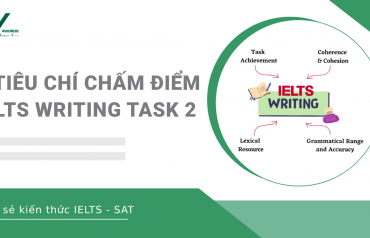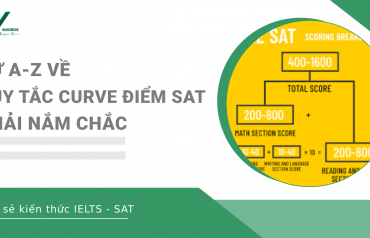Dạng bài True/False/Not Given trong IELTS Reading và cách làm
Cách thức để xử lý bài Đọc hiểu trong IELTS tốt nhất là nắm chắc từng dạng bài thường gặp và chiến thuật làm bài cụ thể. Tiếp nối chủ đề này, các em học sinh tìm hiểu dạng bài True/False/Not given trong IELTS Reading và cách làm nhé.
SERIES 1 – IELTS READING – DẠNG BÀI TRUE/ FALSE/ NOT GIVEN

Phương pháp làm dạng bài True/False/Not Given
Trong dạng bài T/F/NG, chúng ta thường được hỏi “Do the following statements agree with the information in the text?”. Nhiệm vụ là xác nhận liệu rằng nhận định được đưa ra Đúng/Sai/hay Không xác định trong với bài đọc.
Thường với dạng bài này, chúng ta hay nhầm lẫn không biết câu hỏi được đưa ra là Sai hay Không Xác Định. Do vậy chúng ta cần hiểu rõ rằng:
● False (Sai): các nhận định được đưa ra đối lập với các thông tin có trong bài đọc.
● NOT GIVEN (Không Xác Định): nhận định được đưa ra KHÔNG CÓ trong bài.
Chúng ta có thể sử dụng phép thử sau nếu không chắc chắn với lựa chọn mình đưa ra.
● Nếu chúng ta chọn nhận định A là TRUE => phủ định của A sẽ là FALSE. => Chúng ta đem câu phủ định A đi tìm trong bài đọc sẽ thấy trái ngược với thông tin bài đưa ra.
● Nếu chúng ta chọn A là FALSE => phủ định của A chắc chắn TRUE. => Chúng ta đem câu phủ định A đi tìm trong bài đọc chắc chắn đúng với thông tin bài đưa ra.
● Nếu chúng ta chọn A là NOT GIVEN => Phủ định của A chắc chắn NOT GIVEN. => Câu khẳng định A và câu phủ định của A đều không xác định so với bài đọc.
Một điều cần lưu ý rằng IELTS kiểm tra khả năng đọc-hiểu thông tin ĐÃ ĐỀ CẬP TRONG BÀI ĐỌC. Vì thế, bạn không nên dựa vào những kiến thức đã biết từ trước về một chủ đề nào đó để đưa ra quyết định.
Ví dụ:
(Taken from The Official Cambridge guide to IELTS)
In 1818, Luke Howard Published The Climate of London in which he identified an emerging problem: urban development was having a direct impact on the local weather. The early 1800s was a time of great expansion for London and Howard noticed that temperatures in the city were gradually becoming higher than those in rural areas. We now refer to these areas as Urban Heat Islands. The difference in temperature is usually greater at night and the phenomenon occurs in both winter and summer. Experts agree that this is due to urban development, when open green spaces are replaced with asphalt roads and tall brick or concrete buildings.
These materials retain heat generated by the Sun and release it through the night. In Atlanta, in the US, this has even led to thunderstorms occurring in the morning rather than, as is more common, in the afternoon. Officials there are advising builders to use light-colored roofs in a bid to reduce the problem.
Large cities around the world are adopting strategies to combat this issue and it is not uncommon to find plants growing on top of roofs or down the walls of large buildings. In Singapore, the government has pledged to transform it into a city within a garden’ and, in 2006, they held an international competition calling for entries to develop a master plan to help bring this about. One outcome was the creation of 19 “Supertrees.”
These metal constructions are made to resemble very tall trees and range in height from 25m to 50m. Each one is a vertical freestanding garden and is home to exotic plants and ferns. their structure allowed the designers to create an immediate rainforest canopy without having to wait for trees to reach such heights. They contain solar panels used to light the trees at night and also containers to collect rainwater, making them truly self-sufficient.
Do the following statements agree with the information given in the reading passage?
1. Luke Howard invented the term “Urban Heat Islands”.
2. City temperatures are higher than country temperatures regardless of the season.
3. Experts have failed in their efforts to create heat-reflecting concrete and brick.
-Taken from The Official Cambridge guide to IELTS-
Hướng dẫn:
Bước 1: Định vị thông tin
Đầu tiên, chúng ta luôn đọc câu hỏi trước và xác định từ khoá. Ghi nhớ từ khóa (key words) là các từ ngữ không thay đổi (tên riêng, thuật ngữ…) hoặc từ đồng nghĩa với danh từ, động từ, tính từ… trong câu.
Question1: Luke Howard invented the term “Urban Head Islands”.
⇨ Những từ khóa gồm 4 từ (Luke Howard, invented, term, Urban Head Islands)
Bước 2: Xác định thông tin trong bài thông qua tìm từ khóa
Các từ khóa trong bài ở đoạn văn bên trái, từ dòng 5-dòng 8.
…. The early 1800s was a time of great expansion for London and Howard noticed that temperatures in the city were gradually becoming higher than those in rural areas. We now refer to these areas as Urban Heat Islands. The difference in temperature is usually greater at night and the phenomenon occurs in both winter and summer. Experts agree that this is due to urban development, when open green spaces are replaced with asphalt roads and tall brick or concrete buildings….
Bước 3: Chọn đáp án và dùng phép thử nếu cần thiết.
Question 1: “Luke Howard invented the term “Urban Heat Islands” ( Luke Howard là người đã sáng tạo ra thuật ngữ “Urban Heat Islands”.)
“Howard noticed that temperatures in the city were gradually becoming higher than those in rural areas. We now refer to these areas as Urban Heat Islands.” nói rằng Howard là người nhận ra nhiệt độ ở thành phố ngày càng cao hơn nhiệt độ ở nông thôn. Và chúng ta bây giờ gọi những vùng đó là “Urban Heat Islands”.
⇨ Nội dung câu ““Luke Howard invented the term “Urban Heat Islands”. Nghĩa là Luke Howard là người đã sáng tạo ra thuật ngữ “Urban Heat Islands”. Thông tin bài đọc đưa ra trái chiều nhau (chúng ta mới là người đặt tên cho thuật ngữ Urban Heat Island) . Vậy đáp án câu số 1 là FALSE.
Tuy nhiên, để chắc chắn thêm một lần nữa, chúng ta có thể dùng phép phủ định.
Question1: Luke Howard invented the term “Urban Heat Islands
⇨ Phủ định: Luke Howard didn’t invent the term “Urban Heat Islands”.
⇨ Thông tin trong bài đọc nói “We now refer to these areas as Urban Heat Islands”.
(Chúng ta bây giờ mới gọi các vùng đó là “Urban Heat Islands” . Vậy thì tất nhiên Luke Howard không phải là người tạo ra thuật ngữ “Urban Heat Islands”).
⇨ Câu phủ định là câu TRUE
⇨ Câu khẳng định “Luke Howard invented the term “Urban Head Islands” chắc chắn là FALSE.
Tương tự dùng 3 bước cho câu 2, câu 3.
Ta được kết quả như sau:
|
Bước 1: Đọc câu hỏi và xác định từ khoá. |
Bước 2:
Xác định từ khóa trong bài. |
Bước 3: Chọn đáp án và dùng phép thử nếu cần thiết. |
| City temperatures are higher than country temperatures regardless of the season.
|
Dòng 5-10 trong đoạn văn:
Howard noticed that temperatures in the city were gradually becoming higher than those in rural areas. We now refer to these areas as Urban Heat Islands. The difference in temperature is usually greater at night and the phenomenon occurs in both winter and summer. |
– Dựa vào nghĩa của câu:
+Câu hỏi: Nhiệt độ ở thành phố luôn cao hơn nhiệt độ ở nông thôn bất kể (regardless of) mùa nào đi nữa. +Đoạn văn: Dựa vào các từ in đậm, chúng ta thấy nghĩa của câu hỏi giống nghĩa của đoạn văn. Nhiệt độ ở thành phố dần dần cao hơn nhiệt độ ở nông thôn….. Sự khác biệt trong nhiệt độ này càng rõ ràng hơn vào buổi tối, xảy ra ở cả mùa đông và mùa hè. o City temperatures = temperates in city o higher o country temperature = temperature in rural areas o regardless of season = in both winter and summer ⇨ Đáp án TRUE
– Dùng phép phủ định +Câu hỏi: “City temperatures are higher than country temperatures regardless of the season.” +Câu phủ định: “City temperatures are not higher than country temperatures regardless of the season”. Nhiệt độ thành phố không cao hơn nhiệt độ ở nông thôn… ⇨ Rõ ràng, câu phủ định đưa ra trái ngược với thông tin trong bài đọc => Câu phủ định FALSE => Câu nhận định Question 2 TRUE. |
| Experts have failed in their efforts to create heat-reflecting concrete and brick. | Dòng 10-14 trong đoạn văn:
Experts agree that this is due to urban development, when open green spaces are replaced with asphalt roads and tall brick or concrete buildings. These materials retain heat generated by the Sun and release it through the night. |
– Dựa vào nghĩa của câu
+Câu hỏi: Experts have failed in their efforts to create heat-reflecting concrete and brick. Các chuyên gia đã thất bại trong việc tạo ra bê tông và gạch phản xạ nhiệt. +Câu phủ định: Experts have NOT failed in their efforts to create heat-reflecting concrete and brick. Các chuyên gia không thất bại trong việc tạo ra bê tông và gạch phản xạ nhiệt. +Đoạn văn: Experts agree that this is due to urban development, when open green spaces are replaced with asphalt roads and tall brick or concrete buildings. These materials retain heat generated by the Sun and release it through the night. Các chuyên gia đồng ý rằng điều này là do sự phát triển của đô thị khi khoảng không gian xanh bị thay thế bởi những con đường nhựa hay các toà nhà cao tầng được xây bằng gạch hoặc bê tông. Những vật liệu này giữ nhiệt do mặt trời tạo ra và giải phóng chúng vào ban đêm. Đoạn văn không hề đề cập đến việc các nhà chuyên gia có thất bại hay không thất bại trong việc tạo ra bê tông và gạch phản xạ nhiệt. ⇨ Câu hỏi và câu phủ định đều không xác định trong đoạn văn ⇨ Đáp án là NOT GIVEN. |
Bài thực hành:
Vẫn dùng bài đọc Urban Heat, các bạn áp dụng các chiến thuật để trả lời cho các câu hỏi 4-5-6-7-8.
Questions 4-8
Do the following statement with the information given in Reading Passage?
In boxes 4-8 on your answer sheet, write
TRUE if the statement is true
FALSE if the statement is false
NOT GIVEN if the information is not given in the passage
Reading Passage
In 1818, Luke Howard Published The Climate of London in which he identified an emerging problem: urban development was having a direct impact on the local weather. The early 1800s was a time of great expansion for London and Howard noticed that temperatures in the city were gradually becoming higher than those in rural areas. We now refer to these areas as Urban Heat Islands. The difference in temperature is usually greater at night and the phenomenon occurs in both winter and summer. Experts agree that this is due to urban development, when open green spaces are replaced with asphalt roads and tall brick or concrete buildings.
These materials retain heat generated by the Sun and release it through the night. In Atlanta, in the US, this has even led to thunderstorms occurring in the morning rather than, as is more common, in the afternoon. Officials there are advising builders to use light-colored roofs in a bid to reduce the problem.
Large cities around the world are adopting strategies to combat this issue. It is not uncommon to find plants growing on top of roof or down the walls of large buildings. In Singapore, the government has pledged to transform it into a city within a garden’ and, in 2006, they held an international competition calling for entries to develop a master plan to help bring this about. One outcome was the creation of 19 “Supertrees.”
These metal constructions are made to resemble very tall trees and range in height from 25m to 50m. Each one is a vertical freestanding garden and is home to exotic plants and ferns. Their structure allowed the designers to create an immediate rainforest canopy without having to wait for trees to reach such heights. They contain solar panels used to light the trees at night and also containers to collect rainwater, making them truly self-sufficient.
4. Atlanta has experienced more dramatic weather change than other areas of the US.
5. Roofs that are dark in color help address the issue of Urban Heat Islands.
6. Singapore’s Supertrees are made entirely from natural materials.
7. The designers of the Supertrees originally planned to plant very tall trees.
8. The Supertrees require regular maintenance.
Đáp án
4. NOT GIVEN:
In Atlanta, in the US, this has even led to thunderstorms occurring in the morning rather than, as is more common, in the afternoon. Officials there are advising builders to use light-colored roofs in a bid to reduce the problem. => không có thông tin so sánh “more dramatic weather”
5. FALSE:
Officials there are advising builders to use light-colored roofs in a bid to reduce the problem. => light-colored roofs >< dark in color
6. FALSE:
One outcome was the creation of 19 “Supertrees.” These metal constructions are made to resemble very tall trees and range in height from 25m to 50m. Each one is a vertical freestanding garden and is home to exotic plants and ferns. => made entirely from natural materials >< these metal constructions (Supertrees)
7. NOT GIVEN
Their structure allowed the designers to create an immediate rainforest canopy without having to wait for trees to reach such heights. => không có thông tin về “The designers … originally planned…”
8. FALSE
They contain solar panels used to light the trees at night and also containers to collect rainwater, making them truly self-sufficient.
=> make them truly self-sufficient >< require regular maintenance
Nếu bạn đang tìm chọn một điểm đến học tập IELTS thực sự chất lượng, hãy kết nối cùng 4WORDS. Tham gia Thi thử – Học thử hoàn toàn miễn phí. Cùng 4WORDS Tối đa hiệu quả – Tối thiểu thời gian – Tối giản chi phí.
4WORDS dẫn đầu về thành tích đào tạo IELTS/SAT: https://4words.edu.vn/thanh-tich-hoc-vien/
Tin Liên quan
Một số cách phát triển ý trong IELTS Speaking
Trường hợp tệ nhất khi đi thi IELTS Speaking có lẽ là khi bạn không có gì để nói về chủ đề được giao. Nếu rơi vào tình huống ấy, bạn sẽ làm gì? Đương nhiên là bạn vẫn...
18/11/2020Các loại máy tính được dùng khi thi SAT
SAT Math là phần thi duy nhất của bài thi SAT được dùng máy tính. So với phần thi không dùng máy tính, phần thi dùng máy tính trong đề thi SAT Math vẫn chiếm phần lớn thời gian...
06/10/2021Hướng dẫn đăng ký thi SAT trực tuyến
Để đăng ký thi SAT, học sinh có thể lựa chọn đăng ký trực tuyến hoặc qua đường bưu điện. Tuy nhiên, hình thức đăng ký qua đường bưu điện thường chỉ áp dụng với các thí sinh tại...
23/08/2021Tìm hiểu bài thi SAT trên máy tính sắp được áp dụng
Theo thông tin mới nhất từ College Board, bài thi SAT dự kiến sẽ được chuyển đổi sang hình thức thi trên máy tính từ năm 2023. Sự thay đổi này có thể khiến nhiều học viên hoang mang....
03/03/20225 tips khởi động mục tiêu và lập kế hoạch học tập cho năm mới
Đánh giá lại năm cũ 2021 sắp qua, chúng ta đã làm được những gì và chưa làm được những gì? Trong năm mới 2022 bạn mong muốn trải nghiệm hay đạt được những mục tiêu học tập như...
30/12/2021








